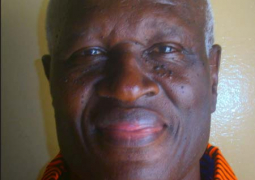An unprecedented global initiative is helping to develop and fast-track drugs for diseases mainly affecting the poor.
Research and development for new medicines is costly, time-consuming and almost always profit driven.
So when a disease affects only the poor, that market is neglected, often meaning no new medicines.
Kala azar, or visceral leishmaniasis, is one such neglected tropical disease. It is the world’s second largest parasitic killer after malaria, killing 40,000 people every year, and yet no new drugs have been developed for decades.
The Drugs for Neglected Diseases initiative (DNDi) and four pharmaceutical firms, Eisai, Shionogi, Takeda Pharmaceutical and AstraZeneca have announced the start of a ground-breaking initiative to accelerate and cut the costs of early-stage drug discovery for kala azar and Chagas, two of the world’s most neglected diseases.
The consortium will circumvent early-stage commercial barriers between the four pharmaceutical participants, allowing DNDi, for the first time, to search millions of unique compounds simultaneously in the hunt for new treatments for neglected diseases.
This innovative DNDi model, which avoids the huge costs associated with developing new drugs by rallying pharmaceutical companies around the world to share their vast resources, is already proving successful, with a portfolio of 15 promising new drugs.
Kala-azar: A chronic and potentially fatal parasitic disease of the viscera (the internal organs, particularly the liver, spleen, bone marrow and lymph nodes) due to infection by the parasite called Leishmania donovani.
Leishmania donovani, the agent of kala-azar, is transmitted by sandfly bites in parts of Asia (primarily India), Africa (primarily Sudan) and South America (primarily Brazil) where all together there are an estimated half million cases per year. There are also several hundred cases yearly in Europe (primarily in the Mediterranean region) and a few in North America.
Kala-azar can cause no or few symptoms but typically it is associated with fever, loss of appetite (anorexia), fatigue, enlargement of the liver, spleen and nodes and suppression of the bone marrow. Kala-azar also increases the risk of other secondary infections. The first oral drug found to be effective for treating kala-azar is miltefosine.
The term “kala-azar” comes from India where it is the Hindi for black fever. The disease is also known as Indian leishmaniasis, visceral leishmaniasis, leishmania infection, dumdum fever, black sickness, and black fever.
The name “Leischmania donovani” honors two men: the British pathologist William Boog Leishman who in 1903 wrote about the protozoa that causes kala-azar and the researcher C. Donovan, who made the same discovery independently the same year.
GUEST EDITORIAL
“Health is not valued till sickness comes.”
Thomas Fuller



